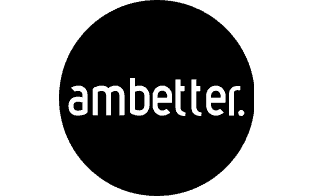There’s no question that the cost of rehab can be an investment. The clinical and logistical resources that are required to comprise an effective care program can be expensive, but this expense pales in comparison to the long-term and everyday costs of addiction. The National Institute on Drug Abuse reports that treatment provides major savings to the individual and to society, including fewer interpersonal conflicts, greater workplace productivity, and fewer drug-related accidents, such as overdoses and deaths; but all you need to know is that it will end up saving you money…and your life.
While you or your loved one may feel overwhelmed and daunted by the actual price of care, it’s important to realize there may be additional options to help pay for drug rehab without actually going out of pocket.
The Dollars and Cents of Recovery: How Much Does Rehab Cost?
The exact cost of drug rehab and treatment will vary based on a number of factors, including the type of program you’re entering, the amount of time you spend in rehab, your insurance coverage, and others; however here is a close approximation of what you or your loved one can expect for different types of care.
- Data from The National Institute on Drug Abuse indicates that the average cost for one full year of methadone maintenance treatment is approximately $6,500 per patient.
- Medical alcohol and drug detox averages between $200 and $800 per day, with the average acute withdrawal management program lasting between five to seven days.
- 30-day inpatient treatment programs average between $15,000-$30,000.
- Regular outpatient programs average between $1,500 and $12,000 for a 90-day program.
- Intensive outpatient (IOP) programs average between $5,000-$15,000.
Some luxury rehab programs may cost as much as $80,000 or more monthly. However, the primary factors that determine the price at these facilities are often amenity and location-related, rather than clinical. These figures will vary from facility to facility, based on therapies offered, type of housing (if applicable), amenities, and location. Remember there are a variety of options to help pay for treatment that can help offset these costs.
What’s the Cost of Addiction?
Now that we’ve taken a closer dollars-and-cents look at the average cost of rehab, let’s examine what prolonged and untreated substance abuse may cost you or your loved one if you don’t get help. Economic stability and financial savings are often one of the first casualties of drug addiction, and they can even suffer in the wake of alcohol abuse. There are many who spend hundreds of dollars per day on the pursuit of their next drug fix. Data from Rand indicates that Americans spend a startling $150 billion per year on illegal drugs, a figure that rivals the yearly amount spent on alcohol for both casual and binge drinkers. No matter what type of drugs you’re using or what sort of addiction you’re battling, the disease will often be more expensive than treatment, even if it’s not the case when you first start. The longer you use it, the more apparent this will become.
How Much Do Drugs Cost?
Like treatment, the value of drugs for illicit consumption purposes will vary based on multiple factors. In this case, how much drugs cost is often determined by the means through which they’re attained (for example, if prescriptions are obtained through doctor shopping or an illegal dealer), the state where illegal markets are operating, the “potency” of the product; amount, form and quantity; and more. Data from the Drug Enforcement Agency’s (DEA’s) 2019 National Threat Assessment reports:
- Pure heroin averages over $1,100 per gram.
- Methamphetamine averages around $56 per gram.
- Cocaine averages around $153 per gram.
- In 2016, the United Nations Office on Drugs and Crime reported the average price of heroin (not pure) in the U.S. was $152 per gram, which translates to around $5-$20 per baggie.
Additional data indicates Vicodin (hydrocodone and acetaminophen) costs an average of $5 per pill on the street compared to around $1.25 per pill in the doctor’s office; the street value of fentanyl is around $40 per pill; OxyContin can cost around $15 per pill and different types of benzodiazepines have an average street value of around $8 per pill.
Translation: depending upon the nature of your drug problem and how bad your addiction has gotten, you may fall into a trap of spending thousands of dollars per week to support your habit, a figure considerably higher per year than the average cost of treatment, considering how much drugs cost.
The Everyday Cost of Drugs and Addiction
Another distinction between the cost of rehab and addiction is the quality-of-life factors involved in getting help versus continuing to use. Let’s not forget that it’s considerably easier to pay for treatment if you have a job; and that it’s considerably harder to hold down a job if you’re battling addiction.
Data from the National Safety Council indicates that over 12 percent of Americans 12 or older suffer from substance use disorder in the past year in 2021. Although employers are generally legally prohibited to outright terminate employees if they admit to past drug use under the Americans with Disabilities Act, current drug use is not protected. While many companies offer employee assistance programs (EAPs) to help employees get help for their substance abuse, drug use can still lead to termination or temporary suspension, which causes further financial hardship.
Another undeniable aspect of the cost of addiction versus the cost of rehab is the decreasing ability to save and manage money while in active substance abuse, and even achieve financial stabilization and growth in recovery. A 2019 study from True Link discussed by research organization Next Avenue reveals that:
Eight out of ten respondents said regaining control of their finances is among the biggest obstacles in recovering from substance use disorder.
- 82 percent said their loved one experienced adverse financial effects due to their substance use disorder.
- 48 percent reported their loved one drained their savings or retirement accounts.
- 43 percent reported additional medical or legal expenses.
- 42 percent said their loved one sold assets to gain access to cash.
- 11 percent said their loved one filed for bankruptcy.
The costs of addiction may continue well beyond treatment, but the first step toward stopping the financial bleeding begins with getting the help you need.
Ways to Pay for Drug Rehab
The cost of addiction treatment is rarely incurred entirely by the person who needs help or their family. There are multiple options that can help you make care more affordable and accessible:
Using Insurance to Pay for Drug Rehab
Public insurance like Medicare and Medicaid can help pay for addiction treatment if care is provided at approved facilities and services fall under Parts A or B. Private insurance plans, like Blue Cross Blue Shield, Aetna, and others readily cover at least some level of treatment at private facilities. Recovery Unplugged is in-network with most major insurance providers to make addiction treatment more accessible to you or your loved one. Using insurance to pay for addiction treatment is one of the most common ways to offset the costs of care.
Using Your Retirement Account to Cover the Cost of Rehab
Very recently, the federal government has made it considerably easier to use your 401K to pay for drug treatment. The 401K Hardship Withdrawal option allows you to withdraw from your 401K for medical expenses without penalty if expenses exceed 10 percent of your adjusted gross income (AGI).
Using Bitcoin to Pay for Drug Rehab
As cryptocurrency becomes more and more popular, some treatment centers are allowing incoming clients and their loved ones to use Bitcoin for drug rehab and treatment. Treatment providers must have a Coinbase account or another means of accepting the currency. Although cryptocurrencies have been commonly associated with illegal drug trafficking, their increased use and circulation have many facilities, flipping the script on this association and allowing people to pay for drug rehab with Bitcoin and others.
What Has Your Addiction Cost You?
Whatever drugs have cost you or your loved one, it’s time to start taking it back. While a one-time investment in treatment can seem overwhelming, it is nothing to compare to the physical, psychological, and financial damage you’re bound to experience if you keep using without getting help. Recovery Unplugged is standing by 24-7 to help you or your loved one start fighting back against addiction while making the cost of treatment as easy to manage as possible. We offer multiple locations throughout the country, work with most major insurance organizations and offer different levels of care to help you get the kind of care you need without paying for what you don’t.
The cost of addiction treatment is nothing compared to the everyday cost of drugs and the ongoing price of prolonged and untreated substance abuse. You or your loved one can start reclaiming your physical, emotional, and financial health by entering treatment now. The same way you built up your financial health is how you can get it all back: one step at a time. Recovery Unplugged is standing by now to offer a full insurance verification and give you a clear idea of how much treatment will be. Call now to begin your journey back from addiction.

























